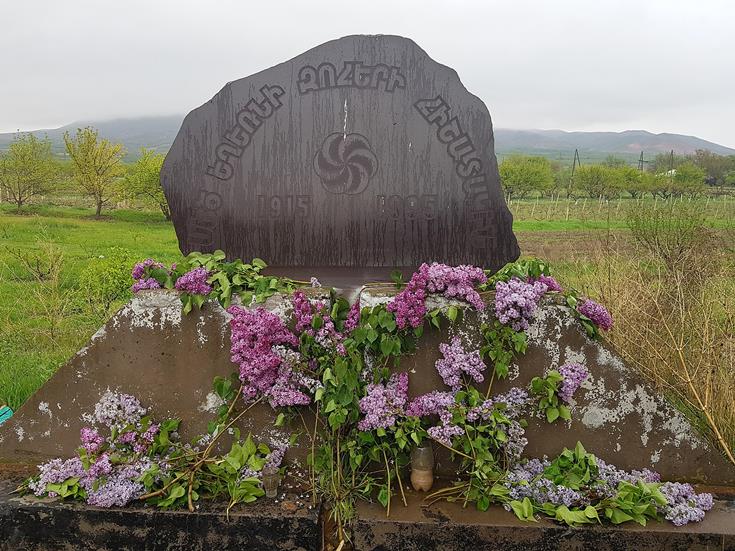A Chronicles website reader self-identified as “bigfish92672” took exception to my statement (“Back to the Mosque,” July 22) that “[i]n the awful annals of the 20th century, two instances of genocide stand out,” the Nazi mass murder of European Jews and the Ottoman mass murder of Armenians. “No Holodomor, comrade?” commented he (or she) with a touch of unnecessary sarcasm.
The answer is clear: No “Holodomor” indeed! The terror famine in the USSR—which killed millions of people in Ukraine, southern Russia, and Kazakhstan in 1932-1933—was a crime against humanity, but it was no “genocide.” Semantic caution and legal precision are called for when using that loaded term. From China to Ukraine, from the Balkans to Armenia, there is a tendency to instrumentalize and weaponize past megadeaths (often of inflated magnitude) in the service of current political objectives.
Consisting of the Greek prefix genos (race, tribe) and the Latin suffix cide (killing), “genocide” was codified as an independent crime by the 1948 UN Genocide Convention: “…acts committed with intent to destroy, in whole or in part, a national, ethnical, racial or religious group, as such…” Attempts to manipulate this term became apparent already in the early stages of the Cold War, however, on both sides of the Iron Curtain. Since the fall of the Berlin Wall, the striving for the genocide-victim status had grown exponentially.
The International Criminal Tribunal for the former Yugoslavia (ICTY) has muddied the waters by establishing an absurd definition of genocide. In constructing the politically expedient myth of a genocide in Srebrenica, it made that term applicable to a mere segment of the male population at the level of a single municipality. If such games are possible in the case of a relatively minor episode—not far from the heart of Europe, only a quarter-century ago—it is even more difficult to establish the number of victims of earlier instances of mass murder.
Various estimates of deaths resulting from the Red Terror in Russia, lasting from December 1917 until the end of 1922, are widely contested. At the lower end, W. Bruce Lincoln in his Red Victory: A History of the Russian Civil War (1989) claims that “the best estimates set the probable number of executions at about a hundred thousand.” At the higher end, Stefan Rinke and Michael Wildt in Revolutions and Counter-Revolutions: 1917 and Its Aftermath from a Global Perspective (2017) claim as many as 1.3 million victims of Bolshevik terror. In this same period, it is generally accepted that a separate crime—the famine caused by Bolshevik requisitions in the Volga valley in 1921-22—took at least 2 million lives. Norman Lowe in his Mastering Twentieth-Century Russian History (2002) contended, however, that the death count was as high as 5 million.
The great famine in the most fertile parts of southwestern USSR in 1932-1933, which included Ukraine but was not confined to it, was primarily caused by land collectivization. It targeted peasants as a class, and not Ukrainians as a people. Deaths in southern Russia and western Kazakhstan were of comparable scale. According to R.W. Davies and S.G. Wheatcroft in The Years of Hunger: Soviet Agriculture, 1931–33 (New York: Palgrave Macmillan 2004), the famine claimed “at least 5.5 million lives” in all three Soviet republics. In his article “The Role of Leadership Perceptions and of Intent in the Soviet Famine of 1931-1934,” published in Europe-Asia Studies (September 2005), Michael Ellman estimated as many as 8 million victims. A similar disparity of estimates—between 700,000 and 1.2 million—applies to the number of victims of Stalin’s Great Purge or Terror (Большой террор) in 1936-1938.
The number of civilian victims of the Japanese occupation of China (1937-1945) is even more widely disputed, from the low of 300,000 (according to Japanese sources) to as many as 15 million (according to Chinese sources). Particularly contentious is the massacre carried out by the Japanese after they conquered Nanking in December 1937. It claimed between 50,000 and 300,000 lives, with 70,000 to 80,000 victims the most likely figure. Likewise, the number of Serbian victims of the Ustaša regime in the “Independent State of Croatia” (1941-1945) ranges from 300,000 to over 1 million.
We still do not know even the approximate number of people killed during the chaotic partition of India in 1947-1948: estimates vary from 1 million to more than 2 million. The famine caused by Mao’s Great Leap Forward (1958-1962) claimed at least 15 million—the current official figure—and possibly as many as 30 million lives. Either way, the Great Chinese Famine was the largest in human history. The Khmer Rouge reign of terror in Cambodia 1975-1979 took between 1.7 million and 2.5 million lives. In Rwanda, the Hutu-led government killed between 500,000 and more than 1 million Tutsis in 1994. In East Timor up to one-third of all residents were killed following the Indonesian occupation, but the numbers are hotly disputed.
To this day, however, there are but two paradigmatic examples of the phenomenon legally defined as genocide in the 20th century. They are the mass murder of Armenians by the Ottoman Empire in 1915-1918, and the mass murder of European Jews by Nazi Germany and its allies in 1941-1945. Dixit.
Image Credit:
above: Armenian Genocide Memorial in Kaghtsrashen [Image by: Armineaghayan / CC BY-SA 4.0 via Wikimedia Commons, resized]

Leave a Reply